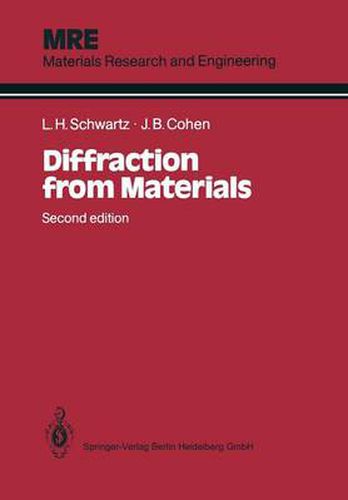Readings Newsletter
Become a Readings Member to make your shopping experience even easier.
Sign in or sign up for free!
You’re not far away from qualifying for FREE standard shipping within Australia
You’ve qualified for FREE standard shipping within Australia
The cart is loading…






This title is printed to order. This book may have been self-published. If so, we cannot guarantee the quality of the content. In the main most books will have gone through the editing process however some may not. We therefore suggest that you be aware of this before ordering this book. If in doubt check either the author or publisher’s details as we are unable to accept any returns unless they are faulty. Please contact us if you have any questions.
The atomic arrangements in condensed matter play an ever increasing role in many areas of science and technology - Materials Science and Engineering, Chemistry, Physics, Geology, Biology and Electrical, Civil, Mechanidtl and Chemical Engineering. Exciting discoveries in these fields in this century often stemmed from studies of these arrangements using diffraction: the structure and functions of DNA and other biological molecules, the configuration of polymer chains, the crystalline nature of metals and their imperfections, semiconductors and insulators, and -the links between their structures, their defects and material properties, and the interaction between materials and the environment. The broad, interdisciplinary character of diffraction studies makes them particularly exciting. With new tools such as the high-resolution electron microscope, new detectors, new techniques (such as EXAFS and glancing angle diffraction) and the new sources, the horizons of this field greatly expanded in the 1950’s and 60’s. Pulsed neutron sources and high intensity storage rings that came on the scene in the late 70’s have opened up possibilities for new study to such vast horizons that it is hard to sit here writing this - there’s so much to be done! Within the walls bounding each field of science or engineering, diffraction and structure is only one specialty. It is too easy for this topic to be developed in such a narrow way that sight is lost of the basic principles and broad possibilities.
$9.00 standard shipping within Australia
FREE standard shipping within Australia for orders over $100.00
Express & International shipping calculated at checkout
This title is printed to order. This book may have been self-published. If so, we cannot guarantee the quality of the content. In the main most books will have gone through the editing process however some may not. We therefore suggest that you be aware of this before ordering this book. If in doubt check either the author or publisher’s details as we are unable to accept any returns unless they are faulty. Please contact us if you have any questions.
The atomic arrangements in condensed matter play an ever increasing role in many areas of science and technology - Materials Science and Engineering, Chemistry, Physics, Geology, Biology and Electrical, Civil, Mechanidtl and Chemical Engineering. Exciting discoveries in these fields in this century often stemmed from studies of these arrangements using diffraction: the structure and functions of DNA and other biological molecules, the configuration of polymer chains, the crystalline nature of metals and their imperfections, semiconductors and insulators, and -the links between their structures, their defects and material properties, and the interaction between materials and the environment. The broad, interdisciplinary character of diffraction studies makes them particularly exciting. With new tools such as the high-resolution electron microscope, new detectors, new techniques (such as EXAFS and glancing angle diffraction) and the new sources, the horizons of this field greatly expanded in the 1950’s and 60’s. Pulsed neutron sources and high intensity storage rings that came on the scene in the late 70’s have opened up possibilities for new study to such vast horizons that it is hard to sit here writing this - there’s so much to be done! Within the walls bounding each field of science or engineering, diffraction and structure is only one specialty. It is too easy for this topic to be developed in such a narrow way that sight is lost of the basic principles and broad possibilities.